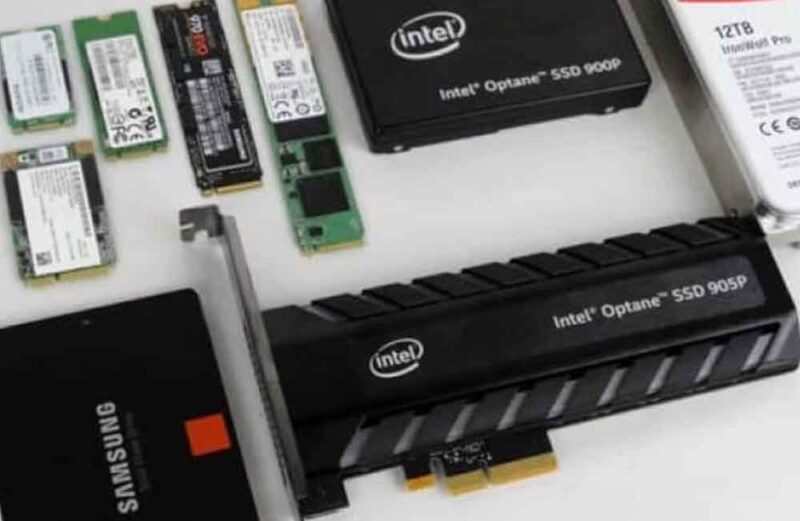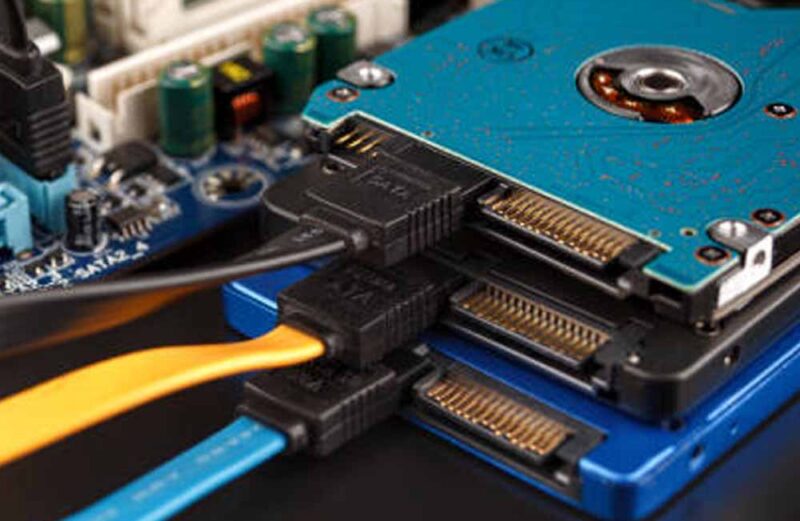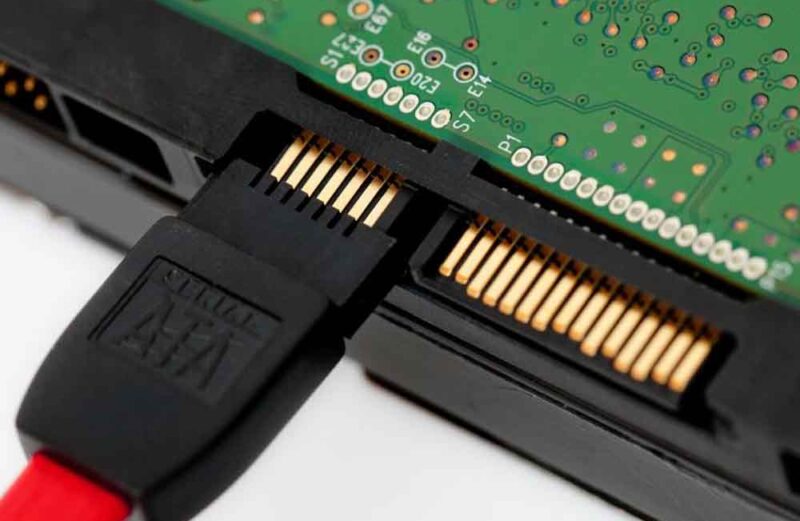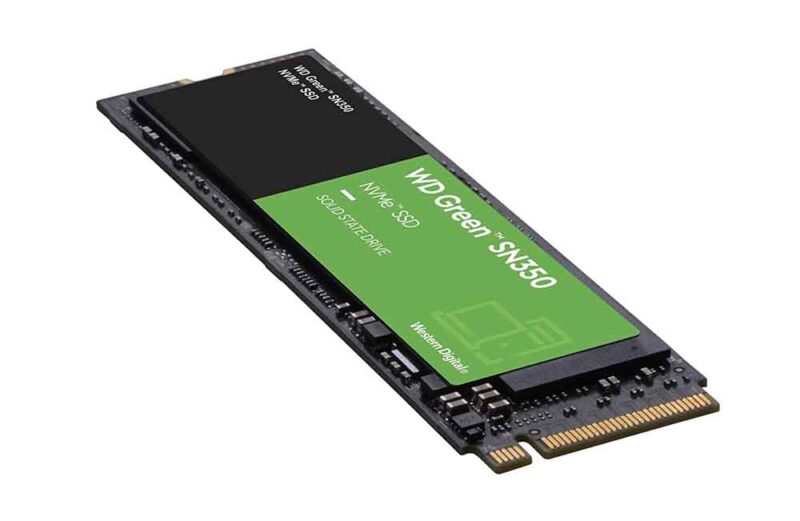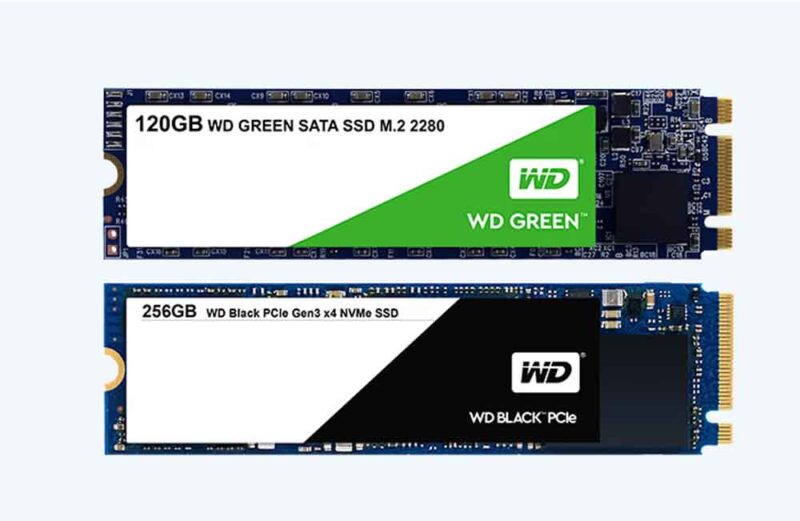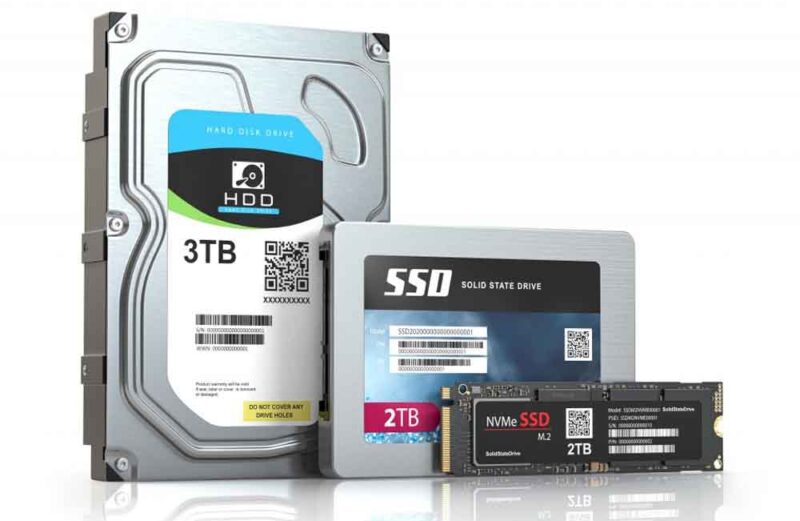Flash memory is a type of non-volatile memory that is used in many modern digital devices, including smartphones, digital cameras, laptops, USB drives, and solid-state drives (SSDs). Unlike traditional magnetic hard drives, flash memory does not require a continuous power supply to retain data. Flash memory works by storing data in an array of transistors […]
What is NAND Technology?
NAND is a type of non-volatile memory technology used in many modern solid-state drives (SSDs) and other types of flash storage devices. NAND is based on the NAND logic gate, which is used in digital electronics to implement the AND function. In NAND flash memory, data is stored in cells made up of floating-gate transistors. […]
What is a hard disk drive (HDD)?
A hard disk drive (HDD) is a type of data storage device that uses magnetic storage to store and retrieve digital information. It consists of one or more spinning disks (platters) coated with magnetic material, and a read/write head that moves across the platters to read and write data. HDDs have been widely used in […]
What about SATA?
SATA (Serial ATA) is a computer bus interface that connects storage devices such as hard disk drives (HDD) and solid-state drives (SSD) to a computer’s motherboard. It was first introduced in 2000 and is the most widely used interface for connecting storage devices to a computer. SATA operates at a speed of up to 6 […]
What is an NVMe SSD?
NVMe SSD (Non-Volatile Memory Express Solid-State Drive) is a type of solid-state drive (SSD) that uses the NVMe (Non-Volatile Memory Express) protocol to communicate with a computer’s central processing unit (CPU). NVMe SSDs are designed to take advantage of the speed and low latency of the NVMe protocol, which was developed specifically for solid-state storage. […]
What Is an M.2 SSD?
M.2 is a type of solid-state drive (SSD) that is used as an interface for storing data on a computer. It is similar to a traditional SATA-based SSD, but is smaller in size and has a more flexible form factor, allowing it to be mounted in different orientations and in more compact spaces. The M.2 […]
What is Solid State Drive (SSD)?
A Solid State Drive (SSD) is a type of computer storage device that uses NAND-based flash memory to store and retrieve data. Unlike traditional Hard Disk Drives (HDDs), which store data on spinning disks, SSDs have no moving parts and instead rely on flash memory to store data. Some of the main benefits of SSDs […]
What is latency in computer storage?
Latency in computer storage refers to the time it takes for the storage device to respond to a request for data. In other words, it’s the amount of time that elapses between when a request for data is made and when the data is actually returned. In the context of computer storage, lower latency is […]
Different Types of SSD: Which One Is More Suitable for You?
There are several different types of solid-state drives (SSDs) available, each with its own set of benefits and drawbacks. When choosing an SSD, it’s important to consider factors such as your budget, performance requirements, and the type of system you will be using the SSD in. Here are some of the main types of SSDs […]
Types of SSD form factors: 2.5”, M.2, mSATA and U.2.
Yes, these are four of the main form factors that solid-state drives (SSDs) come in: 2.5-inch: This is the most common form factor for SSDs and is the same size as a standard laptop hard disk drive (HDD). 2.5-inch SSDs connect to the motherboard using a SATA cable. M.2: M.2 is a smaller form factor […]

